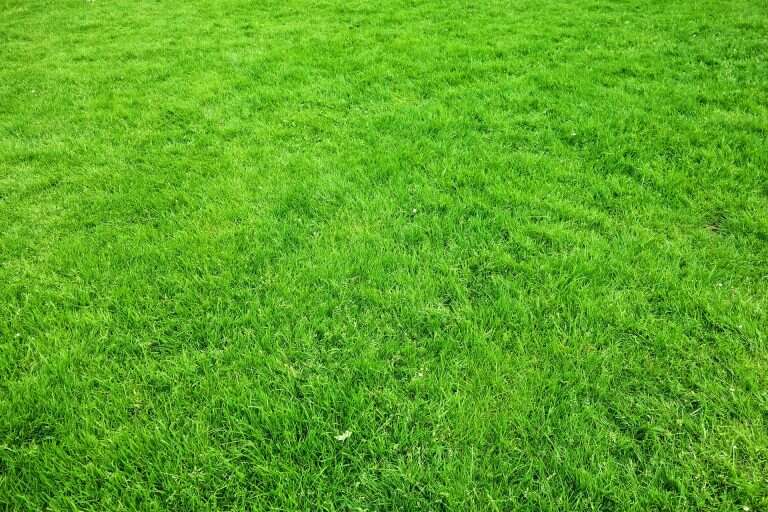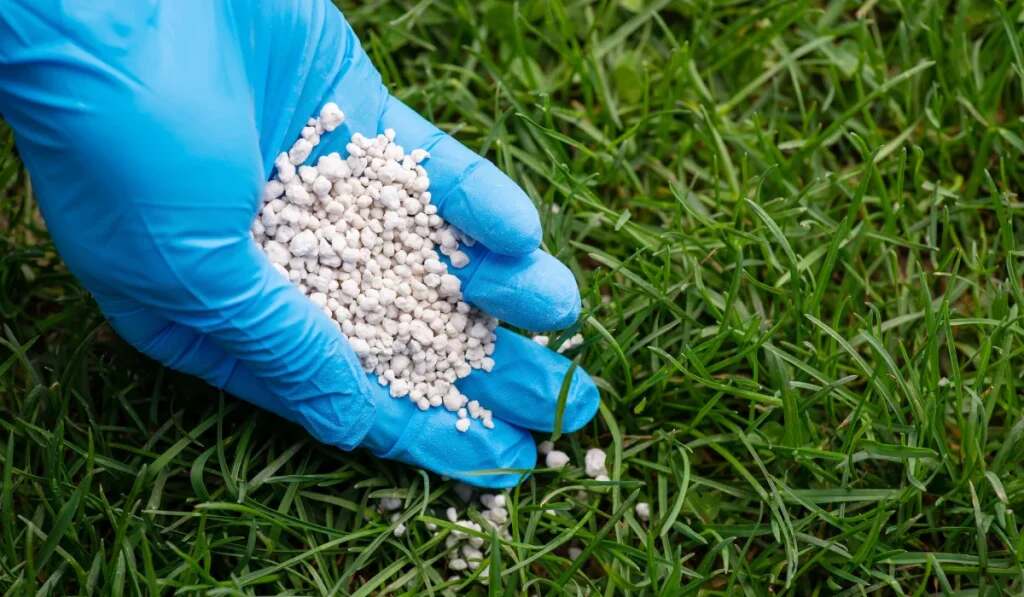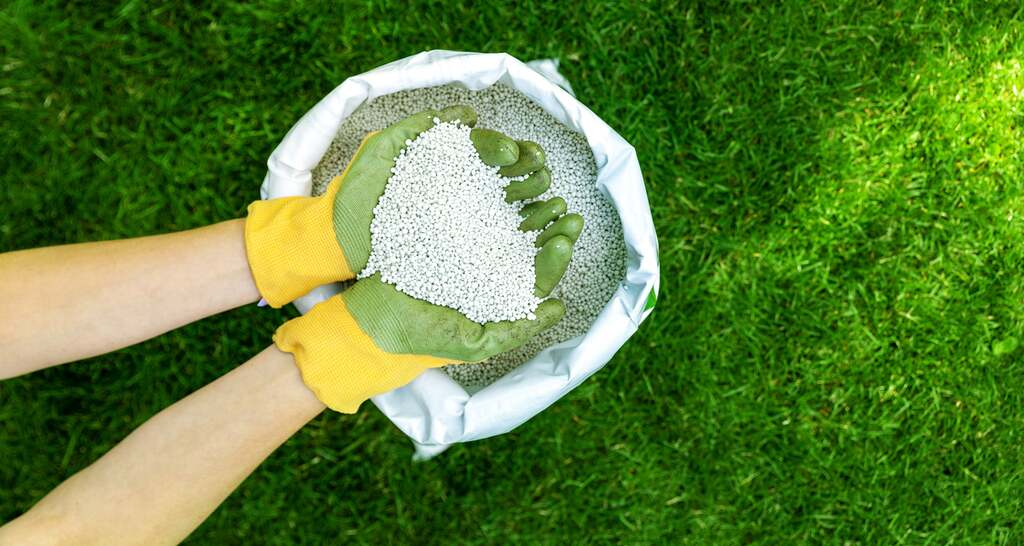St. Augustine Grass, scientifically known as Stenotaphrum secundatum, is a warm-season grass species commonly used for lawns, gardens, and pastures in warm climates. It is popular in areas with mild winters and high humidity, such as the southern United States, the Caribbean, and parts of Australia and Asia.
When nutrients are supplied correctly, grass develops a strong root system. Proper fertilizer is required to provide these essential nutrients to the grass, keeping it healthy and maintaining its lush green appearance. This type of grass is nutrient-loving and needs regular nitrogen, phosphate, and potassium supplies to thrive.
Growcycle is the top-rated place to get the best fertilizers for St. Augustine Grass. These fertilizers keep the grass lush, green, and healthy and provide the essential nitrogen, phosphorus, and potassium.
Characteristics of St. Augustine Grass
This beautiful green grass is characterized by:
-
Appearance
St. Augustine Grass has wide, flat blades and a dense, lush green appearance. It creates a thick, carpet-like turf that is visually appealing and comfortable underfoot.
-
Growth Habit
It spreads through its stem, helping to cover bare areas quickly. It requires less mowing because it grows less aggressively than some other grasses.
-
Climate Tolerance
It thrives in warm climates and is highly tolerant of heat and humidity. It prefers full sun but can tolerate some shade better than many other warm-season grasses. It is not frost-tolerant and goes dormant or can be damaged in cold weather.
-
Soil Requirements
St. Augustine Grass prefers well-drained soils but can tolerate a range of soil types, including sandy and slightly alkaline soils.
-
Maintenance
It requires moderate irrigation, with variations based on the climate and soil. It should be fertilized regularly to maintain its color and vigor.

5 Best Fertilizers Types for St. Augustine Grass
Here are the best fertilizers that can increase the growth and health of St. Augustine Grass:
1. High-Nitrogen Fertilizers
St. Augustine Grass is nitrogen-hungry, so fertilizers with a high nitrogen content are often the best choice. Examples include fertilizers with NPK ratios of 16-4-8, 15-0-15, or 21-5-10. Nitrogen promotes lush, green growth and increases the turf’s appearance.
2. Slow-Release Fertilizers
These provide a steady supply of nutrients over time, reducing the risk of over-fertilization and nutrient leaching. Ideal fertilizer products have a percentage of their nitrogen content labeled as slow-release or controlled-release. Its benefit is that it provides more consistent growth with fewer applications.
3. Iron-Rich Fertilizers
Iron supplements or fertilizers with added iron, e.g., Milorganite, improve the grass’s color without excessive growth. This is particularly useful when nitrogen applications are reduced, such as in late summer or early fall.
4. Balanced Fertilizers
If soil tests show deficiencies in phosphorus or potassium, a balanced fertilizer like 10-10-10 or 13-13-13 can be used. Avoid high-phosphorus fertilizers unless the soil needs them, as excess phosphorus can lead to environmental runoff issues.
5. Organic Fertilizers
Products like compost, seaweed-based fertilizers, or manure-based fertilizers provide nutrients slowly while improving soil health. Organic fertilizers are an environmentally friendly option and reduce the risk of chemical burns.
Fertilizer for St. Augustine Grass
Best Fertilizer Products for St. Augustine Grass
The following fertilizer products are recommended as they work well for St. Augustine Grass:
1. Scotts Turf Builder Southern Lawn Food
It is designed explicitly for Southern lawns, including warm-season grasses like St. Augustine. It promotes thick, green growth with nitrogen tailored for warm climates. It also includes water-smart technology to improve grass’s absorption of water and nutrients. Finally, it helps protect against heat and drought stress.
This fertilizer is best for St. Augustine because it thrives in heat and humidity. It supports the lawn through harsh summer conditions and balances growth and stress tolerance. It should be applied every 6-8 weeks during the growing season.
2. Pennington UltraGreen Southern Lawn Fertilizer
It is formulated for Southern lawns, focusing on warm-season grasses. It contains slow-release nitrogen for sustained feeding over time. Micronutrients like iron promote a deep, green color. It also improves resilience to heat, drought, and foot traffic.
This fertilizer is suitable for St. Augustine Grass as it provides steady feeding that matches the grass’s growing pattern. The added iron improves color, especially in sandy or nutrient-deficient soils. Apply it in early spring after the grass starts greening up, then reapply every 8-10 weeks.
3. Lesco 16-4-8 Fertilizer
This is a professional-grade fertilizer widely used for commercial and residential lawns. Its high nitrogen content promotes robust growth, including phosphorus and potassium, to support root development and overall health. Its slow-release nitrogen ensures consistent growth without issues.
The 16-4-8 NPK ratio is ideal for warm-season grasses like St. Augustine, which require high nitrogen for lush growth. Its balanced nutrients ensure the lawn can thrive even in less perfect soil. During the active growing season, apply 1 pound of nitrogen per 1,000 square feet every 6-8 weeks.
4. Milorganite Organic Nitrogen Fertilizer
It is a slow-release, eco-friendly fertilizer made from heat-dried microbes. It contains 5% nitrogen and 2.5% iron, which gives it a vibrant green color. It also improves soil structure and microbial activity.
It improves color without promoting excessive growth, making it ideal for low-maintenance lawns. It is also safe for the environment and unlikely to burn grass. To maintain color and soil health, use it as supplemental feeding between applications of high-nitrogen fertilizers.

Application Tips for St. Augustine Grass
To get the best desired results, follow these instructions:
Timing
In spring, apply fertilizer once the grass begins to green up and starts active growth at soil temperatures above 65°F. In summer, fertilize every 6-8 weeks, depending on growth and the type of fertilizer used. In the fall, use a fertilizer with higher potassium, like 15-0-15, to prepare the grass for dormancy. Avoid application in late fall to prevent encouraging growth that could be damaged by cold weather.
Amount
Apply about 1 pound of nitrogen per 1,000 square feet per application, adjusting according to the product’s specific instructions. Over-fertilizing can lead to pest issues and disease attacks.
Watering
Constantly water the lawn lightly after applying fertilizer to help the nutrients soak into the soil. Avoid fertilizing before heavy rain to minimize nutrient runoff.
Soil Testing
Perform a soil test after every 1-2 years to understand nutrient levels and adjust fertilization accordingly.
Fertilizer Application for St. Augustine Grass
FAQs
When should the fertilizer be given to St. Augustine Grass?
Begin fertilizing in early spring once the grass starts to green up and soil temperatures reach about 65°F. Avoid fertilizing during dormancy or when the grass is yellow from winter stress.
Should water be applied before or after fertilizing?
Water lightly after applying fertilizer to help it soak into the soil. However, Avoid fertilizing before heavy rain to prevent nutrient runoff. If the soil is dry, lightly water before applying fertilizer to avoid burning the grass.
Can organic fertilizers be used on St. Augustine Grass?
Yes, organic fertilizers like compost, manure, or products like Milorganite are safe and effective for St. Augustine Grass. They improve soil health while providing nutrients slowly.
Conclusion
St. Augustine Grass thrives with the right balance of nutrients, particularly nitrogen, phosphorus, and potassium. When choosing a fertilizer, it’s essential to consider the specific soil conditions, climate, and the grass’s growth stage.
Visit Growcycle to get the best fertilizers for St. Augustine Grass and make the garden look healthy and fresh.

